Conveniently located near Taipei’s Renai Road traffic circle, Winona serves a range of Western-style dishes such as pasta, pizza, risotto and steak, as well as wines galore.
The rows of macaroons displayed in the dessert refrigerator at the door make Winona seem pricy and inaccessible. But the glass wall near the entrance reduces the distance between potential customers and the restaurant by allowing passersby to look inside at the diners.
The menu has more than a dozen hot and cold appetizers, many of them marked as new additions. Options include Baja-flavored shrimp and tomato skewers (NT$180), blue cheese chicken rolls (NT$100) and chef’s special salmon and vegetable rolls (NT$180). The expected appetizers, such as French fries (NT$80) and assorted cheese platter (large for NT$300 and small for NT$180), are also available.

Photo: Tang Hsiang-yi, Taipei Times
Our party started off with the tapas platter (NT$250). A wooden tray arrived with nicely arranged cold cuts along with pickles, olives, pieces of bread, lettuce, cheese and marinated tomatoes. The salami, smoked sausage and Parma ham tasted authentic and started off the meal on a pleasant note.
Having heard positive feedback on Winona’s beef bourguignon (NT$330), I was hoping to try it. When I saw the menu, I noticed that this French beef stew is listed as a dinner entree. After expressing my interest in having the dish at lunch, the waitress said that during lunchtime, beef bourguignon is only available in the set menu for two (NT$1,680). The menu includes up to six choices of house wines, appetizers and main dishes; diners choose two from each category.
I didn’t take the server’s advice. Instead, we ordered a la carte main entrees of Hungarian risotto (NT$330), seafood risotto in tomato sauce (NT$330) and spaghetti carbonara (NT$250). The carbonara won my heart with its enticing presentation of bacon strips and mixture of creaminess and saltiness.
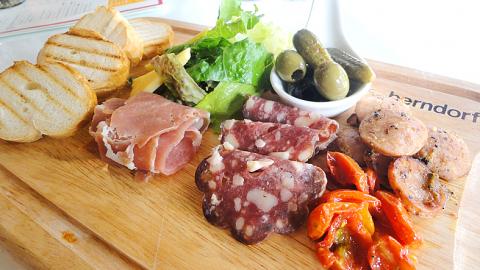
Photo: Tang Hsiang-yi, Taipei Times
Both versions of the risotto included sea bass, shrimp, clams and calamari. Turmeric gave the Hungarian risotto an earthy yellow hue, while tomatoes turned the other one red.
They both looked better than they tasted. Not yet al dente, the rice was clumpy and more soggy than creamy. The grain texture of the tomato-based risotto was so remarkably crunchy that we didn’t finish the plate. The Hungarian risotto was interesting herb-like but also a little salty.
On a happier note, Winona’s wine list offers more than 10 options — all reasonably priced. From NT$80 to NT$150 per glass, recommended wines are paired with dishes on the menu. Wine-savvy wait staff offer suggestions upon request.
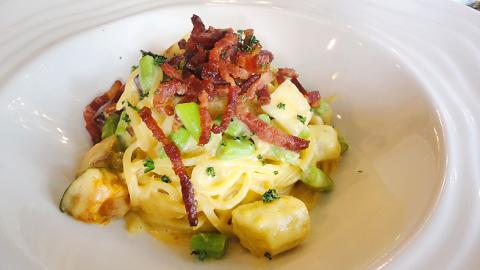
Photo: Tang Hsiang-yi, Taipei Times
Although I wasn’t satisfied with the risotto, the glass of German Riesling wine (NT$150) served as a fruity compensation.
Wine pairings for food are often priced with big markups, due to expense that restaurants incur to bring in the wine. But Winona is owned by a wine importer; hence it offers a vast selection of wine at retail price. Winona also has a wine cellar and invites diners to handpick their favorite bottle.
To bring the meal to a happy end, we ordered the waffle with banana, chocolate, almond and ice cream (NT$180). The firm waffle was garnished with banana slices and chocolate sauce — a combination that seldom goes wrong.
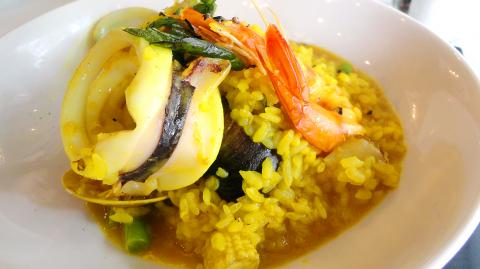
Photo: Tang Hsiang-yi, Taipei Times
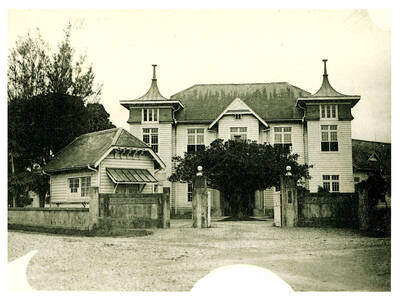
April 14 to April 20 In March 1947, Sising Katadrepan urged the government to drop the “high mountain people” (高山族) designation for Indigenous Taiwanese and refer to them as “Taiwan people” (台灣族). He considered the term derogatory, arguing that it made them sound like animals. The Taiwan Provincial Government agreed to stop using the term, stating that Indigenous Taiwanese suffered all sorts of discrimination and oppression under the Japanese and were forced to live in the mountains as outsiders to society. Now, under the new regime, they would be seen as equals, thus they should be henceforth
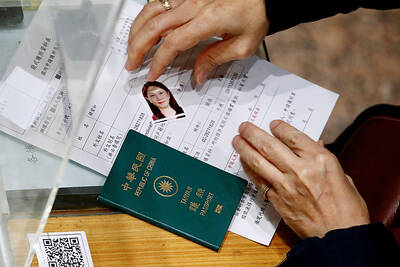
Last week, the the National Immigration Agency (NIA) told the legislature that more than 10,000 naturalized Taiwanese citizens from the People’s Republic of China (PRC) risked having their citizenship revoked if they failed to provide proof that they had renounced their Chinese household registration within the next three months. Renunciation is required under the Act Governing Relations Between the People of the Taiwan Area and the Mainland Area (臺灣地區與大陸地區人民關係條例), as amended in 2004, though it was only a legal requirement after 2000. Prior to that, it had been only an administrative requirement since the Nationality Act (國籍法) was established in
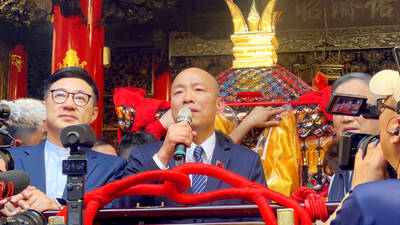
Three big changes have transformed the landscape of Taiwan’s local patronage factions: Increasing Democratic Progressive Party (DPP) involvement, rising new factions and the Chinese Nationalist Party’s (KMT) significantly weakened control. GREEN FACTIONS It is said that “south of the Zhuoshui River (濁水溪), there is no blue-green divide,” meaning that from Yunlin County south there is no difference between KMT and DPP politicians. This is not always true, but there is more than a grain of truth to it. Traditionally, DPP factions are viewed as national entities, with their primary function to secure plum positions in the party and government. This is not unusual
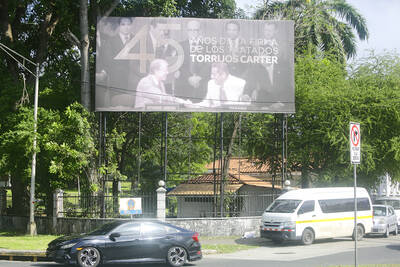
US President Donald Trump’s bid to take back control of the Panama Canal has put his counterpart Jose Raul Mulino in a difficult position and revived fears in the Central American country that US military bases will return. After Trump vowed to reclaim the interoceanic waterway from Chinese influence, US Defense Secretary Pete Hegseth signed an agreement with the Mulino administration last week for the US to deploy troops in areas adjacent to the canal. For more than two decades, after handing over control of the strategically vital waterway to Panama in 1999 and dismantling the bases that protected it, Washington has